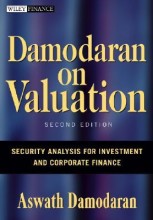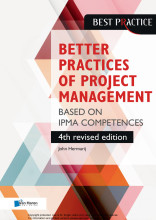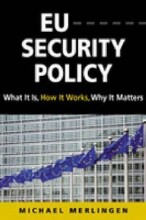Introduction to Valuation - Inside The Valuation Process
14 important questions on Introduction to Valuation - Inside The Valuation Process
Why does the annual report has bias?
They include not only the accounting numbers, but also management discussions on performance, often putting the best possible spin on numbers.
Name another source of bias, besides choosing the companies and management spinning the numbers?
The markets own estimate of the company, the market price. Valuations that stray too far from this number make analysts uncomfortable, since they may reflect large valuation errors (rather than market mistakes).
There are also institional factors that add to bias: equity researchers issue more buy then sell recommendations. Name 3 reasons.
1. Harder to get information on a company they issued a sell recommendation. 2. Pressure from portfolio managers who have large positions in the stock. 3. The companies own investment banking arms, who have other profitable relationships with the company in question.
- Higher grades + faster learning
- Never study anything twice
- 100% sure, 100% understanding
Explain the reward and punishment structure and how it contributes to bias as well.
Analysts can be compensated finding over or undervalued firms. This explains why aquisition valuation have an upward bias. The analyst can find the deal is overpriced, no deal, happy shareholders. Or, whatever the price, finds it is a good price, and reaps the financial windfall that comes with the deal.
Explain how inputs bring bias.
We have to make assumptions while valuing a company, they can be pessimistic or optimistic.
Explain how postvaluation brings bias.
An analyst may revisit assumptions after a valuation to get closer to they had expected when starting off.
Explain how qualitative factor brings bias.
Analysts leave the value for what it is, but make use of quality factors such as synergy and strategy to justify differnces in the market price and their calculated value.
Name three categories of uncertainty.
1. Estimation uncertainty
2. Firm-specific uncertainty
3. Macro-economic uncertainty
Name 3 healthy responses to uncertainty.
1. Better valuation models (reducing estimation uncertainty but not future uncertainties)
2. Valuation ranges (simulations, worst/best case scenarios)
3. Probabilistic statements (70% stock is undervalued)
Name 2 unhealthy responses to uncertainty.
1. Passing the buck (using numbers of other analysts, take credit when right, blame others when wrong)
2. Giving up on fundametals (fall back to more simplistic ways, comparables, multiples. Or stating valuation is pointless, and fall back to reading charts and gauging market perception)
Why does it payoff more to value a emerging/technology company in a more uncertain environment?
It is not how precise a valuation is that determines its usefullness but how precise the value is relative to the estimates of other investors trying to value the same company.
Explain the trade-off on adding details to the model (making it more complex).
More detail gives analysts a change to use specific information to make better forecasts on each individual item, on the other hand more detail creates the need for more inputs, with potential error in each one and generates more complicated models.
Name the three costs of complexity
1. Information overload (Analyst face conflicting information, time pressure, bad choices. Garbage in, garbage out)
2. Black Box Syndrome (Analyst does not understand model anymore)
3. Big versus small assumptions (a big assumption with big impact has to compete with a small assumption with little impact)
What is the principle of parsimony, and how is it implemented in valuation?
The principle of parsimony dictates one should use the simplest possible explanation for a phenomenon before one moves to more complex ones. In valuation: use the simplest model you can get away with.
The question on the page originate from the summary of the following study material:
- A unique study and practice tool
- Never study anything twice again
- Get the grades you hope for
- 100% sure, 100% understanding































